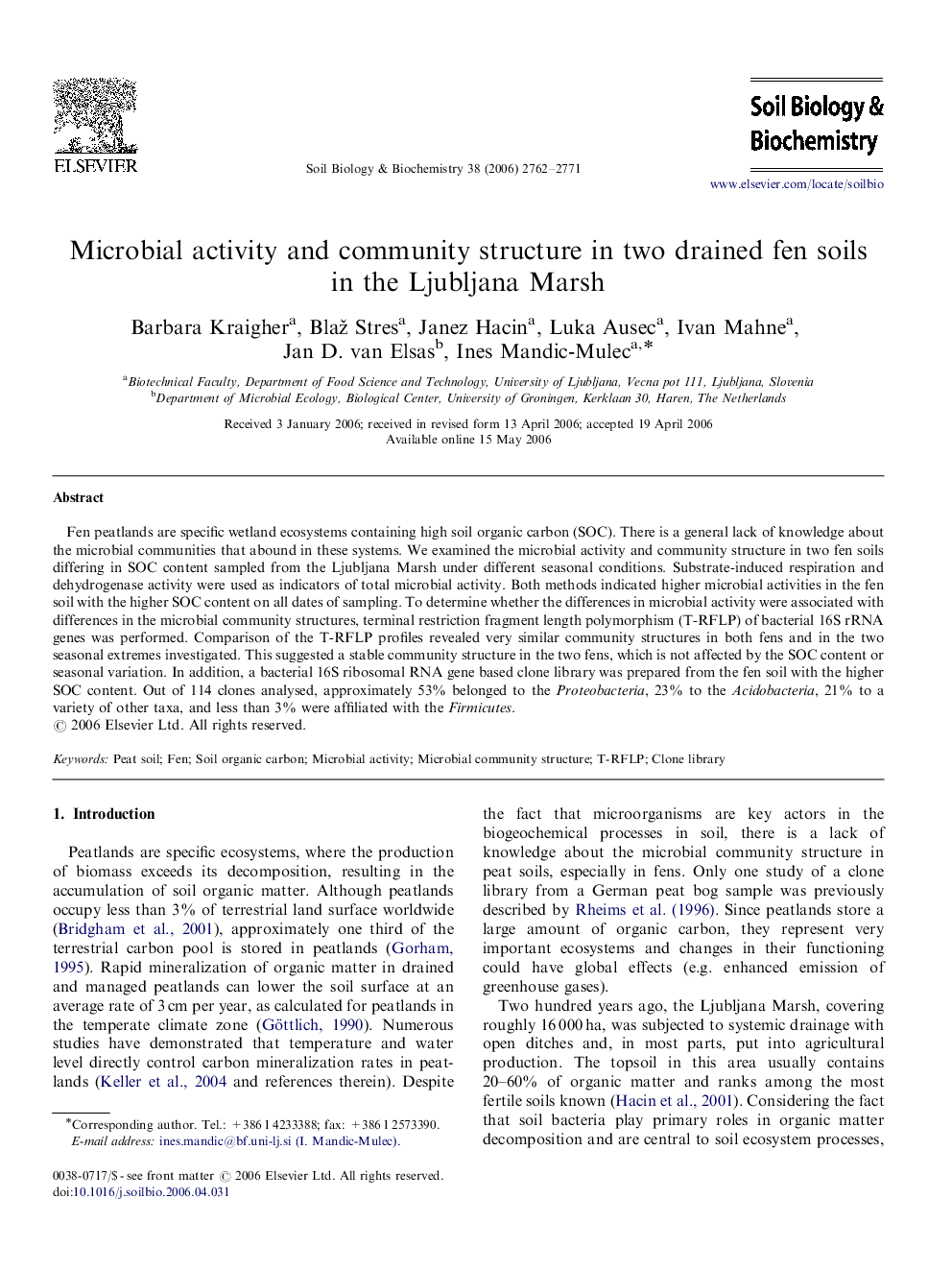| Article ID | Journal | Published Year | Pages | File Type |
|---|---|---|---|---|
| 2027129 | Soil Biology and Biochemistry | 2006 | 10 Pages |
Fen peatlands are specific wetland ecosystems containing high soil organic carbon (SOC). There is a general lack of knowledge about the microbial communities that abound in these systems. We examined the microbial activity and community structure in two fen soils differing in SOC content sampled from the Ljubljana Marsh under different seasonal conditions. Substrate-induced respiration and dehydrogenase activity were used as indicators of total microbial activity. Both methods indicated higher microbial activities in the fen soil with the higher SOC content on all dates of sampling. To determine whether the differences in microbial activity were associated with differences in the microbial community structures, terminal restriction fragment length polymorphism (T-RFLP) of bacterial 16S rRNA genes was performed. Comparison of the T-RFLP profiles revealed very similar community structures in both fens and in the two seasonal extremes investigated. This suggested a stable community structure in the two fens, which is not affected by the SOC content or seasonal variation. In addition, a bacterial 16S ribosomal RNA gene based clone library was prepared from the fen soil with the higher SOC content. Out of 114 clones analysed, approximately 53% belonged to the Proteobacteria, 23% to the Acidobacteria, 21% to a variety of other taxa, and less than 3% were affiliated with the Firmicutes.
